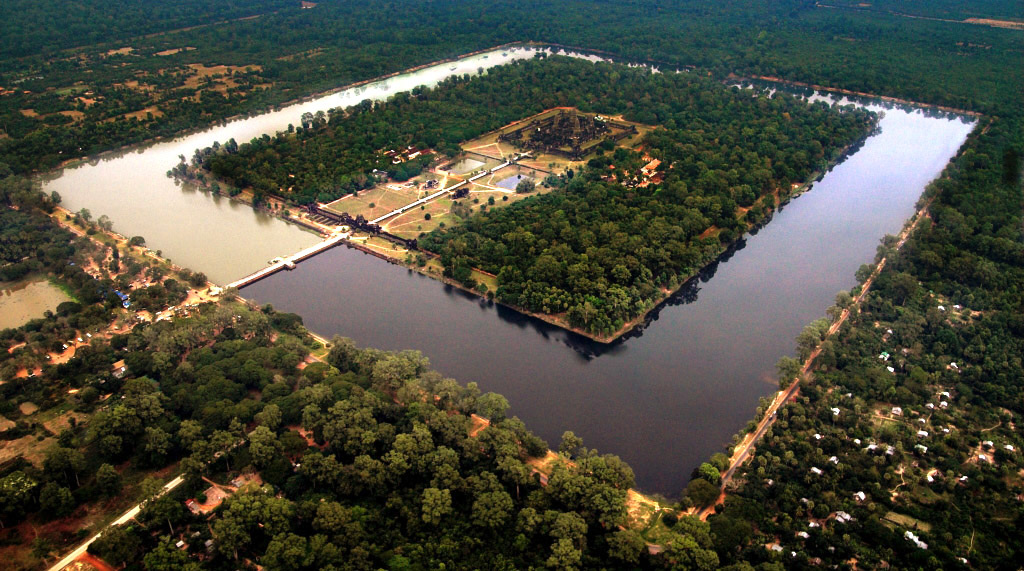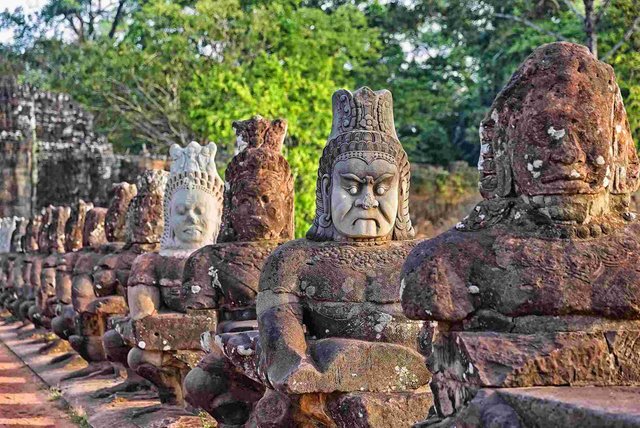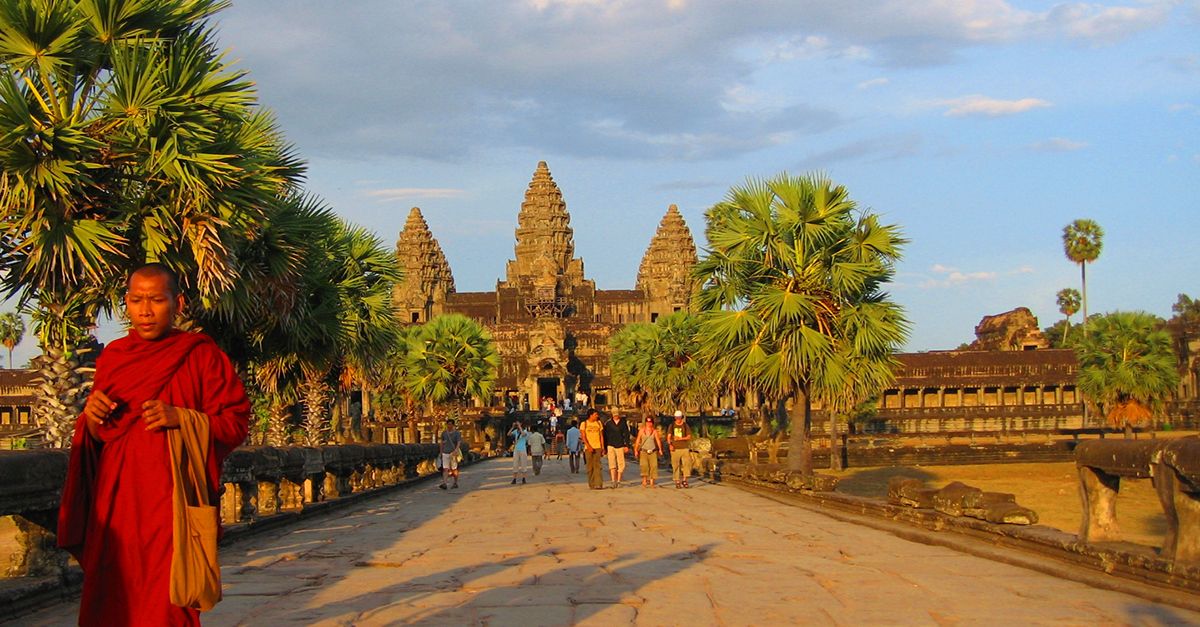Do you want to know which one is biggest Hindu Temple?

Angkor Wat (Khmer: អង្គរវត្ត or "Capital Temple") is a temple complex in Cambodia and the largest religious monument in the world,[1] on a site measuring 162.6 hectares (1,626,000 m2; 402 acres).[2] It was originally constructed as a Hindu temple of god Vishnu for the Khmer Empire, gradually transforming into a Buddhist temple towards the end of the 12th century.[3] It was built by the Khmer King Suryavarman II[4] in the early 12th century in Yaśodharapura (Khmer: យសោធរបុរៈ, present-day Angkor), the capital of the Khmer Empire, as his state temple and eventual mausoleum. Breaking from the Shaiva tradition of previous kings, Angkor Wat was instead dedicated to Vishnu. As the best-preserved temple at the site, it is the only one to have remained a significant religious centre since its foundation. The temple is at the top of the high classical style of Khmer architecture. It has become a symbol of Cambodia,[5] appearing on its national flag, and it is the country's prime attraction for visitors.[6]
Angkor Wat combines two basic plans of Khmer temple architecture: the temple-mountain and the later galleried temple. It is designed to represent Mount Meru, home of the devas in Hindu mythology: within a moat and an outer wall 3.6 kilometres (2.2 mi) long are three rectangular galleries, each raised above the next. At the centre of the temple stands a quincunx of towers. Unlike most Angkorian temples, Angkor Wat is oriented to the west; scholars are divided as to the significance of this. The temple is admired for the grandeur and harmony of the architecture, its extensive bas-reliefs, and for the numerous devatas adorning its walls
Angkor Wat continues to play an important role in Cambodia even though most of the population is now Buddhist. Since the 15th century, Buddhists have used the temple and visitors today will see, among the thousands of visitors, Buddhist monks and nuns who worship at the site. Angkor Wat has also become an important symbol for the Cambodian nation. Today, the Cambodian flag has emblazoned on it the silhouette of Angkor Wat

According to ancient Sanskrit and Khmer texts, religious monuments and specifically temples must be organized in such a way that they are in harmony with the universe, meaning that the temple should be planned according to the rising sun and moon, in addition to symbolizing the recurrent time sequences of the days, months and years. The central axis of these temples should also be aligned with the planets, thus connecting the structure to the cosmos so that temples become spiritual, political, cosmological, astronomical and geo-physical centers. They are, in other words, intended to represent microcosms of the universe and are organized as mandalas—diagrams of the universe.

At the magnificent temple of Angkor Wat, World Monuments Fund is restoring the Churning of the Sea of Milk Gallery. Rainwater and harmful salts have leaked through the roof of the gallery, which forms the south half of Angkor Wat’s prominent east façade, damaging the fragile surface of the frieze. Without treatment, the deterioration will increase at an alarming rate, risking the eventual loss of what most historians regard as the most ambitious and finely produced stone sculptures in Khmer art.

thank you
if like it then subscribe my channel and upvote it
and dont forget to comment.
To the question in your title, my Magic 8-Ball says:
Hi! I'm a bot, and this answer was posted automatically. Check this post out for more information.
i follow you! like this post.
Please, Follow me too.
Thank you and upvote.